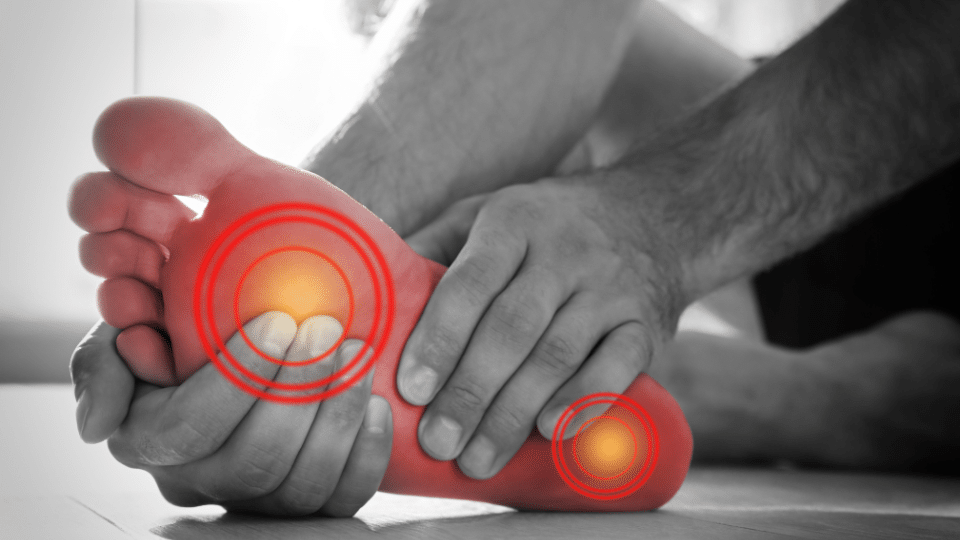Bunions are often thought of as just a bump on the side of the big toe. While the visible deformity may seem like the main concern, bunions can have much deeper effects. Over time, this condition doesn’t just impact your big toe, it can alter the mechanics of your entire foot. That’s why so many people ask the question: can bunions cause pain in other parts of the foot?
The short answer is yes. Because bunions affect alignment, balance, and pressure distribution, they often trigger discomfort well beyond the bunion itself. From the ball of the foot to the arch, heel, and smaller toes, bunions can set off a chain reaction of problems that make walking, exercising, or even standing painful.
In this article, we’ll explore exactly how bunions affect other areas of the foot, what happens when they go untreated, and what solutions can help restore comfort and alignment.
What Exactly Is a Bunion?
A bunion, medically known as hallux valgus, occurs when the joint at the base of the big toe becomes misaligned. Instead of pointing straight ahead, the big toe begins to angle inward toward the second toe. Over time, this creates the telltale bump on the side of the foot.
While shoes and genetics are common contributors, bunions are ultimately a structural problem. Because the big toe joint plays such a crucial role in walking and balance, any misalignment here affects the entire foot.
Can Bunions Cause Pain in Other Parts of the Foot?
Yes, bunions can cause discomfort in multiple areas, even if the bump itself isn’t always painful. Let’s break down the most common places patients feel bunion-related pain.
Pain in the Ball of the Foot
When your big toe drifts inward, it changes how pressure is distributed across the forefoot. Instead of the big toe bearing its share of weight, extra force is placed on the second and third toes. This often leads to metatarsalgia, or inflammation in the ball of the foot. Patients describe it as aching, burning, or the sensation of walking on pebbles.
Pain in the Arch
The misalignment from a bunion can also strain the arch of the foot. As the body compensates, some people develop flatfoot tendencies or overpronation, which creates tension in the arch. Over time, this can contribute to conditions like plantar fasciitis, a common cause of chronic heel and arch pain.
Pain in the Smaller Toes
When the big toe angles inward, it doesn’t just crowd the second toe, it can disrupt the position of the entire toe box. This often leads to secondary deformities like hammertoes, overlapping toes, or corns and calluses from friction. These issues not only cause pain but also make it challenging to find properly fitting shoes.
Heel and Ankle Pain
The effects of a bunion don’t stop at the forefoot. As walking mechanics shift, patients often compensate by adjusting their gait. This altered movement pattern can create stress in the heel, ankle, and even the Achilles tendon. Over time, it may lead to chronic soreness or instability.

Why Ignoring Bunions Can Make Pain Worse
It’s tempting to view bunions as “just a bump,” but untreated bunions rarely stay the same. Without intervention, they often:
- Worsen in size and deformity over time
- Cause increasing stiffness in the big toe joint
- Lead to arthritis or permanent joint damage
- Trigger ongoing pain in the ball of the foot, arch, or heel
- Cause secondary deformities in the smaller toes
That’s why timely treatment is so important. Even if the bunion itself isn’t severely painful yet, addressing it early can prevent future complications.
Treatment Options for Bunions
The good news is that bunions don’t always require surgery right away. There are many ways to reduce pain and improve function depending on severity.
- Supportive shoes with wide toe boxes to prevent crowding
- Custom orthotics to correct alignment and redistribute pressure
- Padding and splints to protect the bunion and reduce irritation
- Physical therapy to strengthen supporting muscles and improve gait
- Advanced surgical options such as minimally invasive correction or Lapiplasty® when conservative methods no longer work
For a deeper look at the full range of solutions, from conservative care to surgical advances, read our detailed guide here: Bunion Solutions: From Correctors to Lapiplasty Surgery and Supportive Shoes.
When to See a Podiatrist
If you’re asking yourself, “can bunions cause pain in other parts of the foot?”, chances are you’re already noticing symptoms beyond the bump. Persistent pain in the ball of the foot, arch aches, toe deformities, or difficulty walking are all signs that it’s time for a professional evaluation.
A podiatrist can help you determine the best path forward whether that means lifestyle adjustments, custom orthotics, or surgical correction. Early intervention not only eases current pain but also helps preserve long-term mobility and function.
The Bottom Line
Bunions are more than a cosmetic concern. By altering foot alignment, they can create pain in the ball of the foot, arch, heel, and smaller toes. Left untreated, bunions often worsen, leading to additional deformities and mobility challenges.
At Fall Creek Foot & Ankle, our team specializes in identifying the full impact of bunions and creating treatment plans tailored to each patient’s needs. Whether you’re looking for conservative care or considering surgical correction, we’re here to guide you every step of the way.
Don’t wait until bunion pain affects every step you take. Schedule an appointment today and take the first step toward lasting relief and better alignment.
